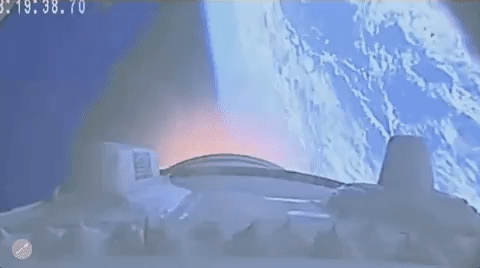Europe's new Vega C rocket launches 7 satellites on debut mission
The Vega C has taken flight for the first time.
It was third time lucky for Europe's new Vega C rocket when it launched for its debut flight from Europe's Spaceport in Kourou, French Guiana, on Wednesday (July 13) after a two-hour delay.
The rocket finally "jumped off the launch pad like a Jaguar racing car," as launch commentators described it, at 9:13 a.m. EDT (1313 GMT; 10:13 a.m. local time in Kourou), at the very end of its two-hour launch window.
The automatic synchronized pre-launch sequence, which takes over the countdown four minutes before liftoff, halted the procedure twice earlier, first before the officially scheduled launch at 7:13 EDT (1113 GMT), then during a second attempt one hour later.
Once the 115-foot-tall (35 meters) medium-lift Vega C cleared the launch pad, everything continued without a hitch, including four burns of the Avum+ upper stage, an upgraded version of the one used on the original Vega rocket.
Related: The history of rockets

Vega C, which was developed by the European Space Agency (ESA) and will be operated from now on by the French company Arianespace, is considerably more powerful than the original Vega, which has been flying since 2012.
In addition to the upgraded Avum upper stage, it sports brand new motors called P120C and Zefiro-40 in its first and second stage, respectively.
Get the Space.com Newsletter
Breaking space news, the latest updates on rocket launches, skywatching events and more!
Vega C can deliver 2.3 tons to a polar orbit around Earth, compared to 1.5 tons for the earlier Vega, ESA officials said in a statement. Vega C also boasts about twice the payload-carrying volume of its predecessor, thanks to its larger fairing, ESA officials added.
"Vega C is well adapted for a broad range of missions, from nanosatellites to larger optical and radar observation spacecraft," Arianespace representatives said in a description of the new rocket. "Payload adapters will facilitate Vega C's deployment of multiple satellite passengers, including configurations with primary payloads that are accompanied by cubesats or microsats."
The debut mission displayed such diversity. The Vega C lofted seven satellites on Wednesday — one main spacecraft and six tiny, ride-along cubesats.
The chief payload was LARES-2, a 650-pound (295 kilograms) satellite developed by the Italian Space Agency.
"Once in orbit, LARES-2's precise path will be tracked by laser, from ground stations," ESA officials said in the same statement. "The purpose of the mission is to measure the so-called frame-dragging effect, a distortion of space-time caused by the rotation of a massive body such as Earth as predicted by Einstein's general theory of relativity. Its predecessor, the similar LARES, was the main payload on the 2012 inaugural flight of Vega."

One of the six cubesats will test a new way to detect biomolecules in space, while another will investigate plant growth in microgravity. A third aims to shed light on the auroras and other phenomena related to Earth's magnetosphere, ESA officials said. The other three cubesats, including one developed by CERN, will study the effects of space radiation on electronics.
LARES-2 deployed into Earth orbit as planned one hour and 24 minutes after liftoff. The six cubesats followed suit about an hour later.
Vega C's debut was part of a busy stretch in spaceflight. The European booster lifted off less than seven hours after Rocket Lab lofted a spy satellite for the U.S. National Reconnaissance Office, for example. And SpaceX plans to launch a robotic Dragon cargo capsule toward the International Space Station on Thursday evening (July 14).
Vega C joins the original Vega and the Ariane 5 heavy lifter in Arianespace's rocket stable. The company is also developing another rocket, the Ariane 6, to replace the Ariane 5; the first flight of that powerful new rocket is expected in 2023.
Arianespace operated Russian-built Soyuz rockets until recently as well. But the partnership enabling such missions dissolved after Russia invaded Ukraine this past February.
Mike Wall is the author of "Out There" (Grand Central Publishing, 2018; illustrated by Karl Tate), a book about the search for alien life. Follow him on Twitter @michaeldwall. Follow us on Twitter @Spacedotcom or on Facebook.
Join our Space Forums to keep talking space on the latest missions, night sky and more! And if you have a news tip, correction or comment, let us know at: community@space.com.

Michael Wall is a Senior Space Writer with Space.com and joined the team in 2010. He primarily covers exoplanets, spaceflight and military space, but has been known to dabble in the space art beat. His book about the search for alien life, "Out There," was published on Nov. 13, 2018. Before becoming a science writer, Michael worked as a herpetologist and wildlife biologist. He has a Ph.D. in evolutionary biology from the University of Sydney, Australia, a bachelor's degree from the University of Arizona, and a graduate certificate in science writing from the University of California, Santa Cruz. To find out what his latest project is, you can follow Michael on Twitter.









